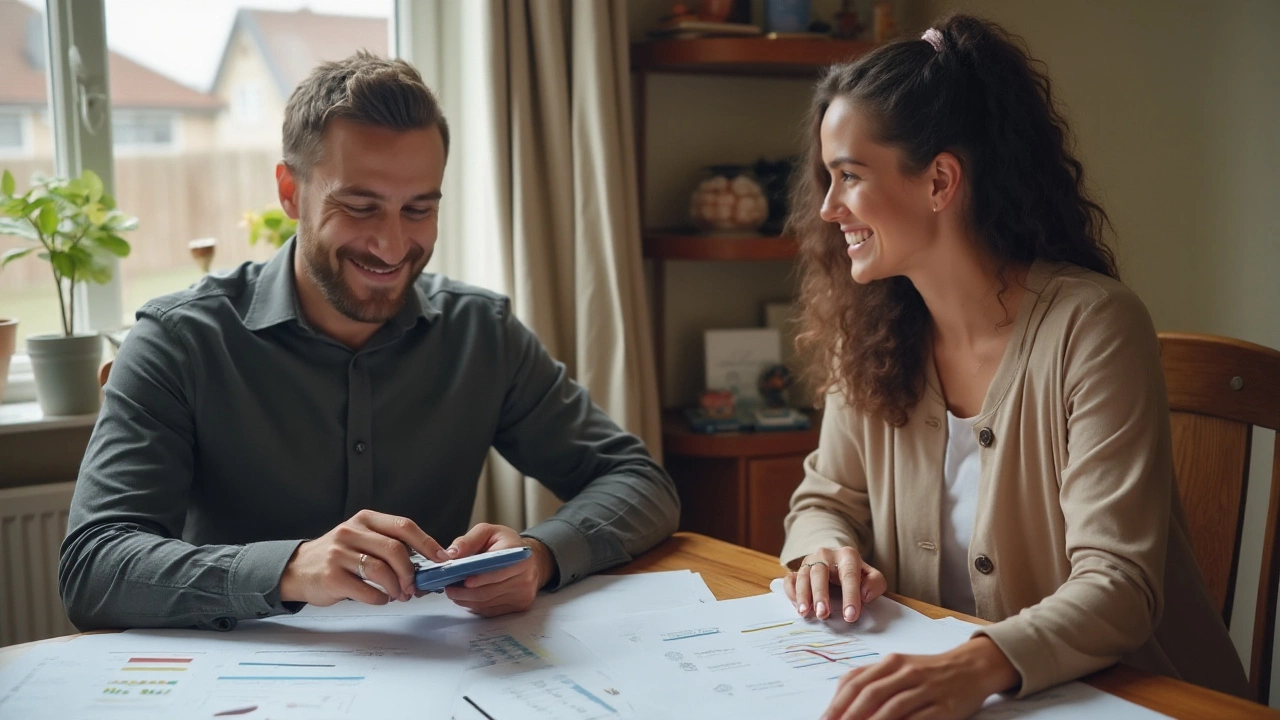Buying a House: Your Straight‑Forward Guide
Thinking about buying a house can feel like stepping into a maze. One minute you’re scrolling listings, the next you’re staring at mortgage terms that sound like another language. The good news? You don’t need a degree in finance to get the keys. This guide breaks down the essentials so you can move from dream to door‑step without the usual headaches.
Understanding Down Payments
First up, the down payment. In the UK it’s usually called a deposit, and it’s the cash you need to hand over before the lender will consider a mortgage. Most banks ask for 5‑10% of the purchase price, but there are schemes that let you put down as little as 2% if you qualify for Help to Buy or other local assistance programmes. The bigger your deposit, the lower your monthly repayments and the better the interest rate you’ll get.
Saving for a deposit doesn’t have to be a year‑long grind. Start by setting a realistic target—say, 7% of a £250,000 property, which is £17,500. Break that number into monthly goals and automate the transfer into a dedicated savings account. Cutting out a few non‑essential expenses, like that weekly pricey coffee run, can add up fast. If you’re lucky enough to receive a bonus or tax refund, toss a chunk straight into the deposit pot.
Choosing the Right Mortgage
Now, the mortgage itself. You’ll see terms like “fixed‑rate”, “tracker” and “variable”. A fixed‑rate mortgage locks your interest for a set period, typically two to five years, which makes budgeting easier because your payment won’t change. Trackers follow the Bank of England base rate, so they can go up or down. If you expect rates to stay low, a tracker might save you money; if you prefer certainty, stick with a fixed rate.
Before you apply, get a mortgage in principle. This is a quick letter from a lender saying they’d likely approve you for a certain amount. It shows sellers you’re serious and can speed up the offer process. Use comparison sites, but also talk to a local estate agent—they often know which lenders are flexible in your area.
Don’t forget about additional costs. Stamp duty, legal fees, survey fees, and moving expenses can add up to 5‑10% of the purchase price. Some first‑time buyer schemes waive part of the stamp duty, so check if you qualify. Adding these costs to your budgeting spreadsheet will keep you from being surprised at the checkout.
Finally, think about the long term. Even if you can afford the monthly payment today, will you still be comfortable if your income changes? A mortgage calculator can help you model different scenarios. Aim for a payment that’s no more than 30% of your net income; that gives you wiggle room for other bills and a little savings.
Buying a house isn’t a sprint; it’s a marathon that starts with a clear plan and a realistic budget. Use these steps to map out your deposit, pick a mortgage that fits your lifestyle, and remember to include all the hidden costs. With the right prep, you’ll move from scrolling listings to holding the keys in no time.

What to Say When Contacting a Real Estate Agent Near You
Not sure how to break the ice with a real estate agent? This article lays out exactly what to say when reaching out, whether you're buying or selling. You’ll find real, practical tips, honest examples, and even what questions to ask so you don’t sound clueless. Avoid getting lost in jargon and make the first move with confidence. No stiff scripts—just straightforward advice that gets you answers and results.

Buying a 250k House on a 50K Salary: Tips and Realities
Purchasing a home on a modest salary can seem daunting, but it's not impossible. With careful budgeting and planning, a 50k salary can be stretched to afford a 250k house. This article explores key tips, realistic expectations, and strategies to increase buying power without overextending finances. Before diving into the home-buying quest, understanding loans, managing debt, and saving on other expenses are crucial steps in the journey.